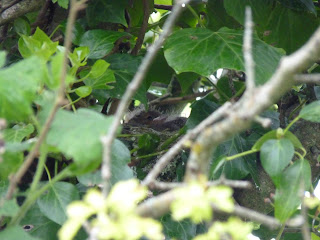Surveying 'with' Raptors
Surveying ‘for’ raptors is a well established discipline in
ecology, however, the latest scientific research is now surveying ‘with’
raptors.
.jpg) |
| Golden Eagle (by John Carey) |
The problem of climate change is increasingly being recognised politically and by the general public. The social, environmental and economic impacts of its actions are being felt worldwide. The equally important mechanism of environmental degradation; human-induced biodiversity loss, is threatening essential ‘ecosystem service’. Ecosystem services include clean water, air and soil, resources upon which our societies and economies depend. In order to overcome or prevent in the future, further, ecosystem service collapse, we must first identify, monitor and recognize the mechanisms involved. Therefore environmental monitoring is of paramount importance. All elements of the environment cannot be monitored given the complexity of the system. Therefore, the most informative and cost effective method must be sought. As a group raptors show considerable latent, potential as monitoring tools. They are often easily detected and monitored. Their presence or absence can be easily noted. As top predators, environmental effects are amplified within their communities. Raptors are typically highly sensitive to a range of environmental pressures, such as prey fluctuations, habitat change, human disturbance and contaminants.
+(Killian+Mullarney).jpg) |
| Marsh Harrier (by Killian Mullarney) |
The role of raptor populations as valuable sentinels of environmental health is being increasingly recognised throughout numerous disciplines. As apex predators previous studies have found them invaluable indicators of the presence of pollutants, toxins and introduced species in the environment. The most well documented example, of proven, effective monitoring ‘with’ raptors, revealed changes in organochlorines in the environment. In Ireland, ecosystems are currently under the damaging effect of two introduced small mammal species and toxins. The introduction and expansion of two non-native small mammal species in Ireland, the Bank Vole and the Greater White-toothed Shrew could have wide ranging impacts within ecosystems throughout the country. Three distinct geographical areas have been defined in relation to small mammals, one with indigenous species only, another with indigenous plus the Bank Vole and a final type with indigenous plus both introduced species. The Bank Vole currently occupy a third of the land mass of Ireland. Genetic studies have established that the Irish population was founded from a small number of individual introduced from Germany in the 1920’s. The populations estimated rate of spread is 3 km per year. The Greater White-toothed Shrew occurs in a limited area within the range of the Bank Vole, it can occur at high densities and both species are now common within the regurgitated pellets of local raptors. This indicates a major shift in small mammal communities recently.
Studies have indicated that where the range of the Bank Vole and Greater White-toothed Shrew overlap they have a synergistic relationship which negatively effects the abundance of the Wood Mouse populations and can cause local extinction in the Pygmy Shrews. Interspecific competition and disease have both been implicated as causing factors. As the range of the two introduced small mammals expands so this negative effect for the Wood Mouse and Pygmy Shrew will be replicated into the new areas.
The effects of the Bank Vole and
the Greater White-toothed Shrew are being felt by avian predators of small
mammals. The Barn Owl, Long-eared Owl and Kestrel are in
particular implicated. Barn Owl research has
indicated that the Bank Voles and the Greater White-toothed Shrews presence in
the diet can have profound effects on their breeding success. In areas of the
south west where Bank Voles occur at high densities the species is seen to
constitute 80% of Barn Owls’ diet. Given the overlap in diet of these three
species it can be envisioned that the Bank Voles and Greater White-toothed
Shrews are impacting upon the Kestrel and Long-eared Owl also. Pygmy
Shrews have been demonstrated to comprise 7%-14% of the mammalian composition
of Barn Owl diets in Ireland. The Wood Mouse in Ireland represents
70% of the diet of the Long-eared Owl. Increasingly, the value of using apex predators as indicators of
environmental health is being promoted. Are the
introduced small mammals impacting the ecology of raptors and what consequences
will their spread have for the future outlook of the wider countryside?
Raptors that prey
on the Brown Rats or the House Mouse can fall victim
to secondary poisoning. Due to the depleted small mammal community in Ireland
these small mammals regularly occur in the diets of raptors in Ireland. Barn
Owls within the Bank Vole and Greater White-toothed Shrew range may experience
lower levels of secondary poisoning, a similar situation
may be experienced by Kestrels and Long-eared Owls.
.jpg) |
| Kestrel (Clive Timmons) |
As small mammal specialists the Barn Owl, the Kestrel and the Long-eared Owl can act as biodeterminators, in establishing the wider significance of a small mammal introduction and secondary poisoning from rodenticides on Ireland’s ecosystems. By studying ecologically damaging agents in the environment 'with' raptors, efforts can be made to prevent, minimize and mitigate their effects in the future.








.JPG)


.jpg)
.jpg)









.jpg)













